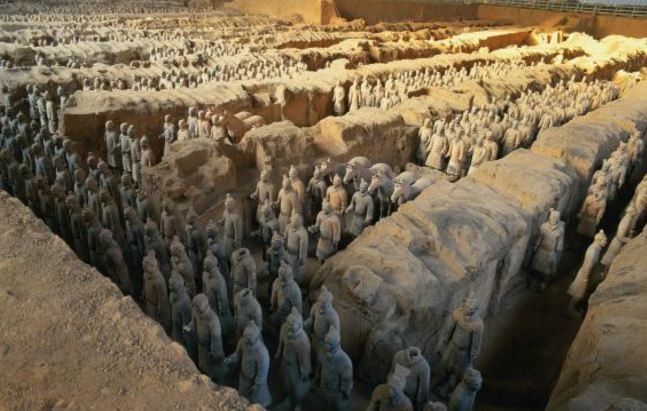Evidence is almost ironclad that China's world famous "Terracotta Warriors" weren't the work of Chinese artisans and artists acting on their own, but were the direct result of contacts with the ancient Greeks and their tradition of life-size human sculptures.
The discovery of ancient European DNA in China's northwestern Xinjiang region where the Terracotta Warriors are found could lead to reconsidering the statues' history. It also suggests the ancient Greeks might have helped create the Terracotta Army.
"We now have evidence that close contact existed between the First Emperor's China and the west before the formal opening of the Silk Road (in 2 B.C.)," said Li Xiuzhen, senior archaeologist at the Emperor Qin Shi Huang Mausoleum Site Museum.
"We now think the Terracotta Army, the acrobats and the bronze sculptures found on site have been inspired by ancient Greek sculptures and art," said Xiuzhen.
Archaeologists said they've unearthed new evidence the ancient Greeks might have helped design the Terracotta Army, which were crafted during the reign of China's First Emperor Qin Shi Huangdi in 3 B.C.
Experts also say there was no tradition of building life-sized figures before Qin Shi Huangdi's tomb was built in Xian. Sculpture was little used in China when the tomb of the First Emperor was built, and realistic sculpture was not known at all.
Because of the new evidence, experts now believe Greek sculptors might have even been involved in their design.
"The massive employment of sculpture in the mausoleum is totally unprecedented in Chinese tradition," said Prof. Lukas Nickel, chair of Asian Art history at the University of Vienna, who is involved in the research project.
"This makes it likely that the skills necessary came not from China but from the outside."
"Besides the lack of any sculpture tradition and the historic opportunity of a direct encounter between both cultures, the most helpful evidence I did locate (was) in a record written about a century after the death of the emperor," said Nickel.
"It states that the first sculptures the emperor made were intentional copies of other figures the Chinese had found at the Western end of the Chinese world."
Other evidence found in bronze figurines of birds excavated from Qin Shi Huangdi's tomb show manufacturing techniques from ancient Greece and Egypt that were previously unknown in ancient China.



























